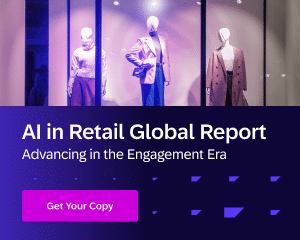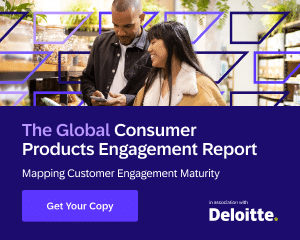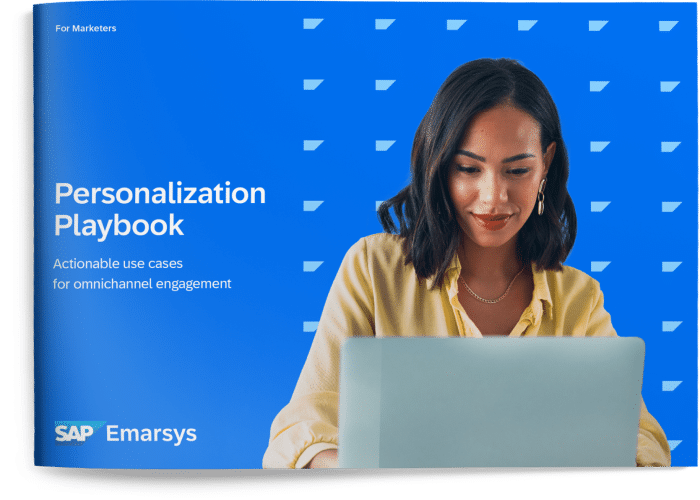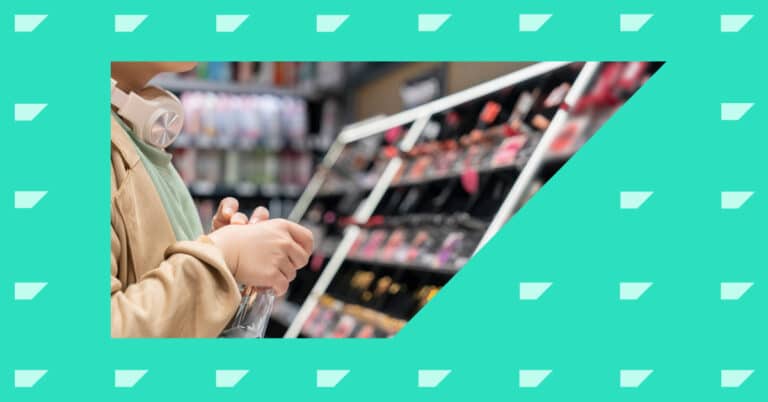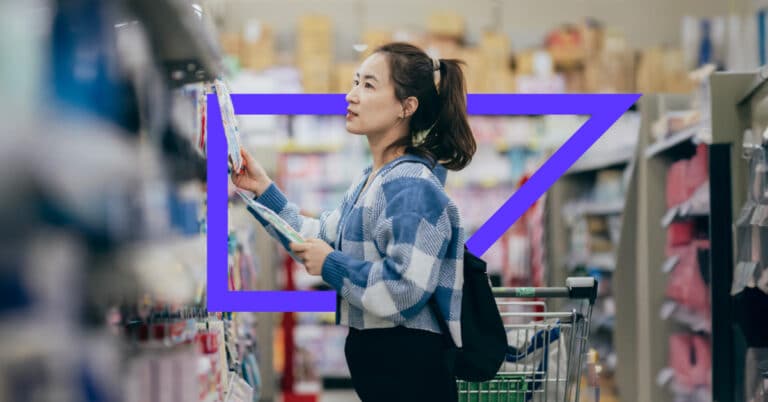The CPG experience you offer your consumers will make the difference between long-term loyalty and one-off purchases. So how can you deliver great experiences, consistently and at scale, in order to develop true consumer loyalty?
As a solution consultant, I work closely with CPG brands of all types — cheese brands, beauty products, candy, and everything in between. Time and again, it’s that the brands that seek to understand their consumers, to connect with them in meaningful ways across touchpoints, are setting themselves up for long-term growth.
In this article, I’ve laid out strategies and best practices for creating the kinds of CPG experiences that keep consumers coming back for more.
What Is CPG Experience?
CPG experience refers to the entire interaction that a consumer has with a brand in the consumer packaged goods (CPG) industry. This includes interactions such as seeing ads for the product, purchasing via a third-party retailer, using the product, and engaging with the brand online.
CPG experience is similar to customer experience (CX), but with added layers of nuance unique to the consumer products industry. Whereas CX commonly revolves around direct purchases made by the customer from the brand, CPG experience is one step removed from that interaction simply because of the nature of CPG. This means that in order to provide the same level of customer experience that shoppers have come to expect, CPG marketers must find ways to close the gap and create direct consumer experiences
Unless you’re a hermit who lives in the wilderness, unconnected from humanity, you’re likely engaging with CPG brands every day. And as you know, that experience can be outstanding or disappointing, which directly influences consumer loyalty.
Lack of personalization makes a poor CPG experience
71% of consumers expect personalization, and 76% of consumers get frustrated when they don’t get it. Accenture
Don Brett, the host of the CPG View Podcast, hosted a panel session with SAP Emarsys that focused on how CPG brands are building consumer engagement. During the session, Don shared a lackluster experience he had with a brand:
Watch the complete session on-demand.
In this short clip, Don describes how he was shopping for a product, but the brand served him an ad for a product that was irrelevant to his search. The experience left him wondering whether he should shop elsewhere.
Serving unpersonalized, irrelevant content sends a clear signal to the consumer — a signal that the brand doesn’t understand them.
Relevant, meaningful content makes great CPG experiences
Consumers are under constant barrage from brands vying for their attention, so it’s no wonder they’re more likely to notice — and appreciate — content that’s relevant to them.
Here are a few questions I recommend asking to help ensure all your interactions are on track for a positive experience:
- Have I segmented my target audiences, and is this interaction right for this segment?
- Am I engaging on the channels where this consumer is likely to engage?
- Will this interaction solve a problem the consumer has?
- Am I offering genuine value for the consumer’s time and attention?
When you speak to the consumer about what interests them, and you offer value that they can’t resist, you lay the foundation for a long-lasting relationship that’s built on trust.
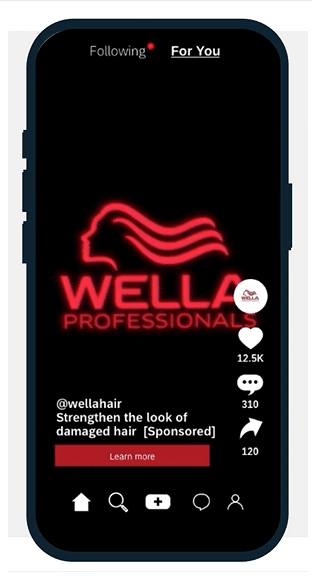
Check out this interactive journey featuring Wella Company to see one way to use TikTok to drive personalized, relevant engagement at scale.
Best Practices for Creating Positive CPG Experiences
Building long-lasting relationships with consumers, and delivering consistent messaging that’s relevant and tailored, depends on building direct engagement. That kind of relationship depends on how well you can understand your consumers and act on that understanding to deliver the right message to the right person at the right time.
1. Plan your zero- and first-party data strategy
Data strategy is so critical that it should be items 1, 2, and 3 on your CPG marketing to-do list. In fact, it should be a part of everything you do in marketing. And collecting zero- and first-party data is key to providing the kinds of tailored, personalized experiences that drive loyalty. By collecting this data and activating it throughout your consumer journey, you can build an ongoing, two-way conversation with the consumer.
When I sit down with brands to uncover ways to create direct consumer engagement, I always ask these two questions:
- What data and content do you already have? The answer to this question is the starting point, but more than that, I find that many brands don’t necessarily know how much they can do with what’s already on hand. (For example, the data you have on blog traffic for a holiday recipe could lead to your next highly engaging campaign.)
- What goal do you want to achieve? The answer to this question helps inform you about what data you maybe don’t have right now, but need to acquire in order to reach your goals.
Be sure to consider the stages of your consumer’s journey with your brand and determine when it’s appropriate to gather data.
Data strategy is an extensive topic. To learn more, check out these real examples of how to capture zero- and first-party data.
2. Create value exchanges that matter
Customers today understand that their data is valuable to your brand, and they won’t simply give it away for no reason. You have to give to get, and presenting a value exchange that resonates with your consumers gives them ample reason to share their personal information.
A few examples of this include:
- A QR code on your packaging can provide an immediately redeemable coupon in exchange for an email address.
- A pop-up on your website can lead consumers to sign up for your newsletter to get inspiration on creative ways to use your products.
- A “Find the Right Product for You” quiz on your website or mobile app can help guide consumers to the right product and yield data at the same time.
Don’t stop there, though. Our recent consumer products guide outlines 10 omnichannel journeys to build direct engagement.
3. Adapt dynamically over time with progressive profiling
Consumers aren’t static. They’re constantly changing — whether following new trends, moving to a new location, or trying a new hobby. A consumer who’s interested in hair volumizing today might be more interested in braiding styles in six months.
Connecting with your consumer at different stages and gauging their current interests can help you adapt your messaging. Over time, you can build up more and more data and hone your personalization efforts.
“One of the things for us is how you create a value exchange that really resonates and is dynamic over time. The relationship with the consumer will change. How do we evolve our personalized content as that relationship with our consumer evolves?”
4. Create seamless experiences across channels
When consumers encounter friction as they fluidly switch from channel to channel, that friction reflects poorly on the brand. An omnichannel strategy gives your consumers a consistent, seamless experience as they interact with you.
Getting started on your omnichannel strategy doesn’t have to mean “all the channels all at once.” Instead, start by focusing on the key channels that make the most sense for your brand and your consumers and then gradually expand.
Don’t underestimate the engagement power of your website! When you send messages to consumers, you need a destination point, a call to action, and your website is premium real estate for value-added content to engage consumers, deepening that relationship and making it last. At the same time, you’ll gain greater insights into their interests and motivators.
5. Go through your own brand’s CPG experience!
Walking through your brand experience as the consumer can be eye-opening, and it’s something that every marketer should experience.
In-store purchase, web browsing, social ads, mobile app — on every channel you use to connect, what is the experience? As you do your walk through, put yourself into the mindset of your consumer. What solutions are you looking for? How quickly and easily are you able to find what you need? If you encounter friction or frustration along the journey, or if you find there’s something lacking, you may have uncovered a prime opportunity to optimize the CPG experience and drive greater consumer loyalty.
Conclusion
By understanding and connecting with your consumers across various touchpoints, you can create meaningful and personalized interactions that foster loyalty and drive growth. Using the best practices in this article, you can build strong, lasting relationships with your consumers and set your brand up for sustained success.
This is the second article in this series on marketing for consumer products — more to come!
Other Articles in This Series:
